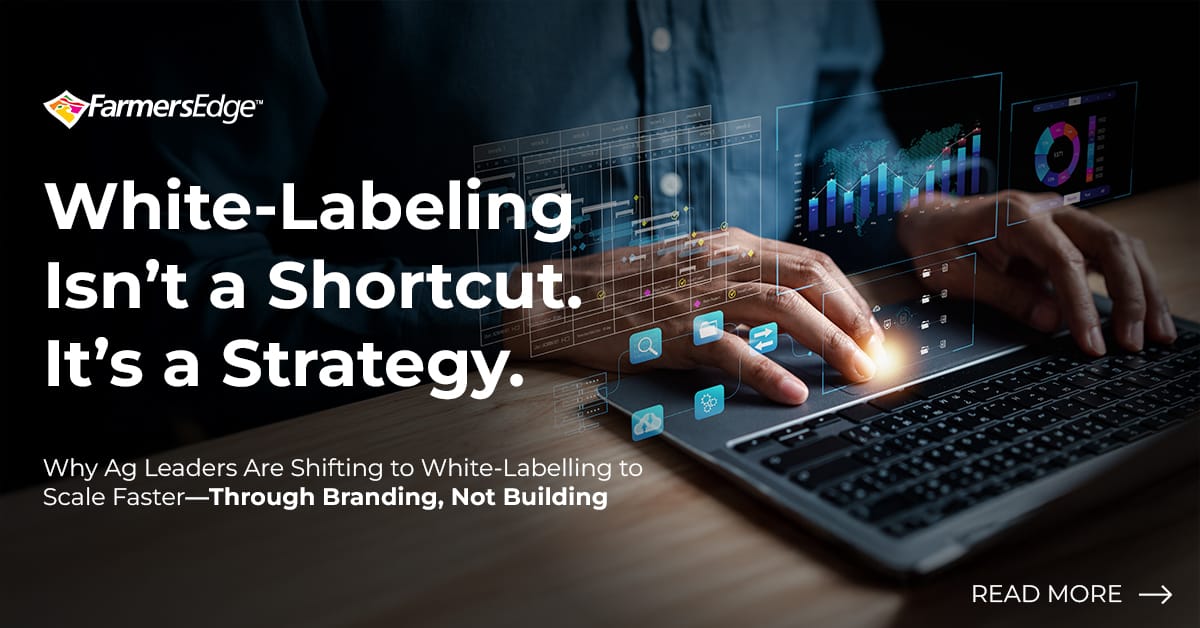This week’s SFTW ConvoTM features my conversation with Greg Chiocco, VP of Engineering and Product at Farmwise.
Greg excels at the intersection of hardware and software, bringing complicated products to life that provide real and immediate value to customers. He loves spending time around cars, and industrial equipment. He has spent a career spanning more than 20 years working at different Ag, AgTech, and consumer hardware companies like Mineral, Granular, Zoox, Climate Corp, Corteva and Trimble. His last stint was with Farmwise. He also has experience working in software, strategy, commercialization and product management.
Greg could have been a farmer in another life. He is a straight shooter, loves tinkering with hardware, and does not take himself too seriously. He often participates in amateur car racing. He loves cars so much, he named one of his kids after a famous car guy!
Given his wide variety of experiences in different parts of Ag and AgTech, he has a ton of experience in terms of what works, and most importantly what doesn’t. He has the scars to show it.
In this conversation, we dug more into robotics, operations, how to sell to growers, and the massive importance of logistics and distribution. I hope you enjoy and learn from this SFTW ConvoTM, as much as I did having the SFTW ConvoTM.
Greg Chiocco, ex-VP of Farmwise. Image provided by Greg Chiocco (Artwork by EI)
Summary of the conversation
This conversation centers around agriculture robotics, particularly the challenges and misconceptions surrounding their adoption. Greg Chiocco discusses defining "robotics," overcoming farmer skepticism, and building a successful business model for ag tech. He emphasizes the importance of demonstrating tangible value, addressing logistical issues, and providing robust support and training alongside new technology. Case studies alone aren't enough; a portfolio of evidence and practical, hands-on demonstrations are crucial for farmer buy-in. He also touches on the future of ag robotics, the role of data, and the potential for an incubator-style model to aid startup distribution.
Build Less, Scale Faster: The Rise of White-Label Platforms
Ag leaders aren’t asking “Can we build it?”—they’re asking “Should we?” White-labeled platforms are helping agribusinesses move faster and deliver on strategy while staying focused. From carbon tracking to digital agronomy, e-commerce, and lab insights, leaders are choosing to scale through their brand, not by building new tech stacks.
Customers don’t care who built it—they care that it works. With white-labeled tech, you can go to market fast with your logo, your workflows, and our managed infrastructure behind the scenes.
SFTW ConvoTM with Greg Chiocco
Robotics and the automation spectrum
Rhishi Pethe: When you think about ag robotics, what are some of the things that people get right and what are some of the things people don't? What are misconceptions that the industry has about ag robotics?
Greg Chiocco: It really comes down to how you define "robotics." If you see robotics as level-three autonomous vehicles, then no, agriculture hasn’t seen massive adoption. But if you count semi-autonomous guidance systems, rate control on sprayers, or yield monitors on combines, then elements of robotics have been part of farming for decades.
That’s a misconception I’d call out. Same with the idea that farmers are slow to adopt technology. If you spend any time on farms, you’ll see they use a lot of sophisticated tech, it’s just more specialized and less obvious to outsiders.
Today, there’s technology everywhere on a farm, you just have to know what you’re looking at.
Rhishi Pethe: I guess we define robotics by the cultural norms we’re used to. Maybe “norm” isn’t the perfect word, but how do most people understand a robot? They watch movies, Terminator, or whatever, and that shapes their idea of what a robot is. That’s where the perception starts.
Greg Chiocco: Maybe it’s better to think about it using the common framework of robotics, the three D’s. (Dull, Dirty, Dangerous) You usually have to check all three boxes to call something a robot. But if you check one or two, you’re still part of the way there, and that’s definitely happening.
Take a modern tractor, for example. You can automate the entire U-turn sequence. That’s where a lot of the action happens, when the tractor turns, a million things are going on. You can set it up to repeat that pattern automatically, even triggering it based on GPS position.
So there’s already a ton of technology and automation happening. It might not meet the strict definition of robotics, but that’s a pretty common misconception.
Rhishi Pethe: So automation falls somewhere on the spectrum of what you call robotics.
Greg Chiocco: Maybe it ties back to what I said about the three D’s, but there’s probably another framework people use too, something that involves sensing and reacting in real time to the environment. Maybe that’s another key element of robotics. Even with that definition, though, you’ll find technology on combines that adjusts ground speed based on the density of the incoming crop, ie slowing down so they don’t jam up. That kind of automation has been around for years.
Five levels of automation defined by Case IH (Image Source: Case IH)
Rhishi Pethe: I was looking at The Mixing Bowl’s crop-robotics landscape map. The 2024 edition lists more than 300 companies. My hunch is that your definition runs a bit broader than theirs, but I’ll confirm. You’ve worked at FarmWise and at Zoox, which, in its own way, is a robotics outfit.
So, thinking about the work you’re doing at Zoox and what you did at FarmWise, where do the challenges line up, both technologically and in getting customers on board?



